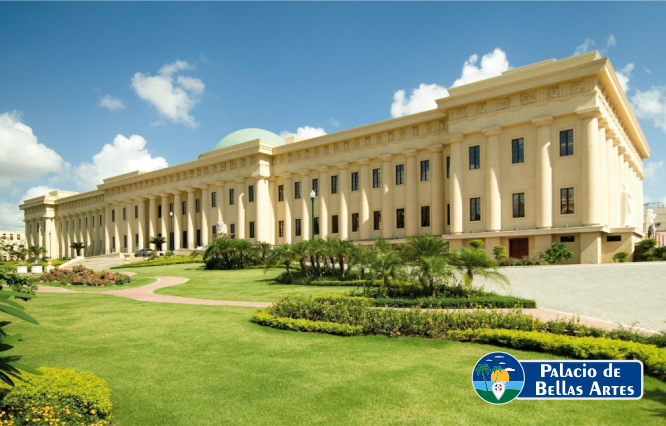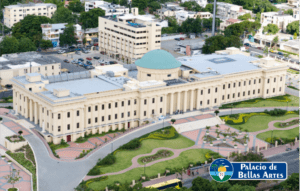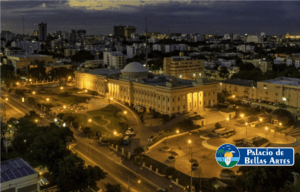
Since its creation, The Palace of Fine Arts has had the objective of developing and promoting art and culture in the Dominican Republic and that, due to its great contributions, most of the important managers of active cultural life have come out of that cultural center of studies.
The Palace of Fine Arts was built to house the General Directorate of Fine Arts, its companies, schools and the National Gallery, and with the interest of enabling a performance hall where the work of artistic groups can be shown. It was conceived within the Biennial School Construction Plan developed between 1950 and 1952.
Its opening was in 1956, with the creation of this palace began a stage of great artistic achievements, a true movement of cultural creation, dissemination and animation, according to the art critic and cultural researcher Myrna Guerrero wrote in the book “El Palacio of Fine Arts, 1956-2008”.

Some writers state that the structure was received in its first five years by a basically upper-class public, but that after the execution of former Dominican President Rafael Leónidas Trujillo, the public was socially diversified.
The building became the privileged place for the teaching and artistic practice of music, theater, dance and visual arts and thanks to this beautiful heritage today we have great talents in all social and cultural strata.
The Palace was designed by Francisco Manuel Batista Bisonó –Cuqui Batista-, an architecture student at the University of Santo Domingo, who proposed two projects, one modern with an advanced and bold style, and the other traditional and neoclassical, with Greek inspiration, which was finally chosen.

The building, inspired by the temple of Apollo in Delphi, has a symmetrical plan that has four facades and entrances with stairs in each of them. The facades are decorated with monumental columns with Doric capitals that support the entablature, which has a smooth architrave, a frieze of triglyphs and metopes, and a cornice.
In the exterior spaces, two underground parking lots with capacity for 600 cars were added, and the gardens and squares were renovated and in 2010, the Palace of Fine Arts was declared by the International Bureau of Cultural Capitals as one of the Seven Treasures of the capital. Dominican, a selection made by popular vote.
To learn about other interesting places in the Dominican Republic, click here:
How to get to The Palace of Fine Arts:
